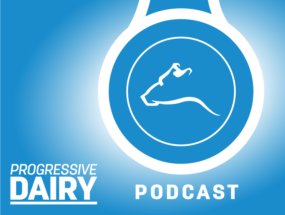Dairymen in Llanquihue, Chile, are experiencing a drought, the likes of which hasn’t been felt for nearly a decade.
With producers facing a 30 percent reduction from the region’s normal 70 inches per year, pastures are turning brown, so dairymen are adjusting their grazing practices accordingly.
Dairyman Carlos Neumann has seen these conditions before and is taking it in stride. His great-grandparents were among the 40,000 German immigrants who migrated to Chile in the 1850s. They sought and obtained lands similar to their homeland in Europe and quickly adapted to the enterprises of forestry, fishing, farming, cattle ranching and progressive dairying.
The Neumann family’s original homestead of 445 acres has increased over the years as adjoining smaller acreages have been acquired. The majority of the current 780 acres is in pasture, divided into well-managed paddocks. His cows are on pasture year-round, and fresh water is available at all times by means of a 1,000-gallon water wagon.
His 200 registered Holstein herd’s average per-year production is about 24,000 pounds per cow, but due to the drought it has dropped to near 17,000 pounds per cow. Six trench silos hold 40 acres of corn silage, which is fed at 2 p.m. each day. Milking times are 4 a.m. and 4 p.m. with two milkers in a double-5, side-opening parlor. After washing and drying the udders, milkers strip out a couple of squirts and then attach the claws. The parlor features automatic takeoffs, milk sensors and auto-closing gates.
Neumann uses A.I. and selects sires for traits in the following order of importance:
(a) feet and leg strength
(b) udder conformation and
(c) milk production.
A nutritionist consultant balances his rations. Cows are equipped with transponders, and they are challenge-fed concentrates while being milked.
Five years ago he contracted a firm to build a 200-cow freestall barn, which features rubber mats. Four months of the year the cows are housed in the barn during the night. The rest of the time they are on pasture.
Wastes from the barn and corrals are stored in two 100,000-gallon tanks which are pumped out on the pastures during the rainy season. This sprinkler method ensures even distribution and is relatively easy to manage.
There is no difficulty in selling his baby bull calves at the current $50 per head. He keeps all heifers as replacement stock.
In 1987, Carlos brought over a veterinarian from Holland to assist him in fine-tuning the raising of his baby calves. For the first week, baby calves are housed individually and are fed 3 quarts of colostrum in the morning and 3 quarts in the afternoon. On the eighth day, they are transferred to a group where they consume powdered milk at 3 quarts in both the morning and in the evening. At 90 days they are weaned. Apparently this system has worked for him as he has had less than a 1 percent mortality rate.
Milk prices vary and are driven by supply and demand. Much of the Chilean prices are affected by world powder production. Two years ago he received $11.44 per hundredweight (cwt), but now it is near $17.16 per cwt.
Carlos also supplements his dairy income by selling water. His two wells (at 263 feet deep) produce 555 gallons a minute. This crystal clear 50˚F water is in high demand with the local salmon farmers. This contaminate-free water is a transition medium for small salmon that are transported from the lake farm. With the hotter-than-normal weather, there is an even greater need for this colder water. The salmon farmers bring in their tankers several times a day to load up. It is a very lucrative addition to the total bottom line of farm income.
Even though his dairy operation is turning a profit, Carlos is an opportunist. He’s considering converting part of his farm into a dairy dude ranch, where the public can have a “hands-on” dairy experience. And pay to do so. PD
Publisher Emeritus Leon Leavitt




